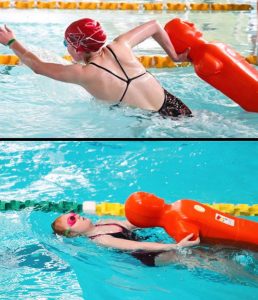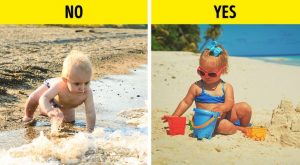7. How to behave in an emergency so that you don’t get hurt?

If you have never been taught swimming by a coach and do not know a lot of survival tips, do not ignore the game classes organized on the beaches by lifeguards. It would be a good idea to take part in these courses with all your family or friends. According to experts, a person remembers more when they are taught information cheerfully, rather than reading a long pamphlet on the subject.
You’ll learn to behave in an emergency. For example, if a tearing current takes you to the sea with your child, rescuers recommend not to try to constantly lift the baby because it will exhaust you both within 20-30 seconds. Instead, they will advise you to put the baby on his back, support their neck, and swim in a slow breaststroke until the rescuers arrive. This method will help you save your energy.
8. How to reduce the risk of infection after swimming

It is safer to swim on public beaches where water is tested. And don’t swallow water, especially if its temperature is above 75°F because you may end up being infected with rotavirus. Its symptoms, which appear after 2-3 days, include vomiting, intestinal disorders, fever and sore throat.
Do not wash fruits and vegetables in seawater because there is a high risk of contracting E. coli or enterovirus. In addition, you can also get meningitis by swimming in hot water. Surprisingly, Staphylococcus aureus, something else you can get from swimming, is not dangerous for healthy people. This is more dangerous for people with weak immune systems or damaged skin.
If you take a vacation with your baby, don’t let them play in the surf line because the water is the most contaminated. Try to distract his attention by building sand castles and getting water to play deeper waters.
Doctors say that the concentration of serious infection pathogens is low in swimming pools because bacteria die quickly when in a chlorinated environment. But there is a risk of getting infections from pool surfaces and other people’s personal belongings


